Brussels in 2 days
After an incredible year on British soil, my traveller's heart couldn't, nor wanted to stay still. I wanted more. And the same thing happened to my friend. Before going to study in Lille for a month, we couldn't miss the opportunity to see a little bit of the Belgian capital that they'd told us so much about at university. So, say no more. We got 2 flights heading to Brussels.
The only problem was to be able to enjoy a whole day, we had to get a flight at 7:30am, which meant waking up at 4:30am. From that moment we already knew it would be a long day.
Day 1: the centre of the city
Not long after arriving we almost got lost and the trains in Brussels really didn't help much when it came to carrying our huge suitcases. Not even the train from Brussels airport has doors wide enough. Not at all. It even had some stairs for us to climb.
The hotel that we found last minute wasn't great either. It was quite near the centre, so, truth is, for one night we didn't really care. We dropped off our suitcases and threw ourselves onto the street. Obviously, even though it was the beginning of June, the weather in Brussels wasn't on our side. We came here in "summer" mode as a form of trying to escape the English rain. But, we soon found out that the north of Europe doesn't differ much from the United Kingdom. Anyway, what could we do? At least we brought umbrellas.
The first thing we saw as we entered the city was the Brussels Stock Exchange. Did you know that it was founded by decree of Napoleon in 1801? Well, it was! And a fair few years ago, in 2000, they joined with the Paris and Amsterdam Stock Exchanges to create the Euronext, one of the first pan-European exchanges in the world.
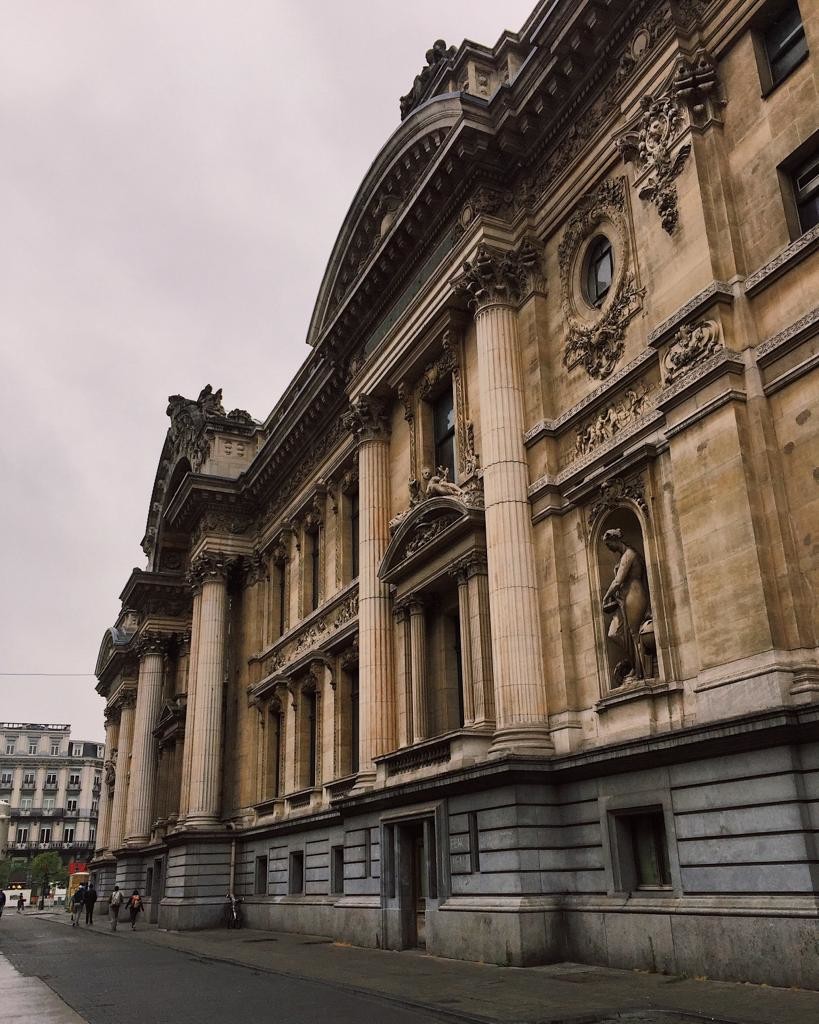
We carried on walking towards the centre of the city, and we arrived at the Grand-Place of Brussels. An authentic wonder, completely full of colour and golden details. One annoying thing was that it was a really grey day, but we kept up hope that suddenly a ray of sun would peep through the clouds so we could see all the gold reflect on the walls.
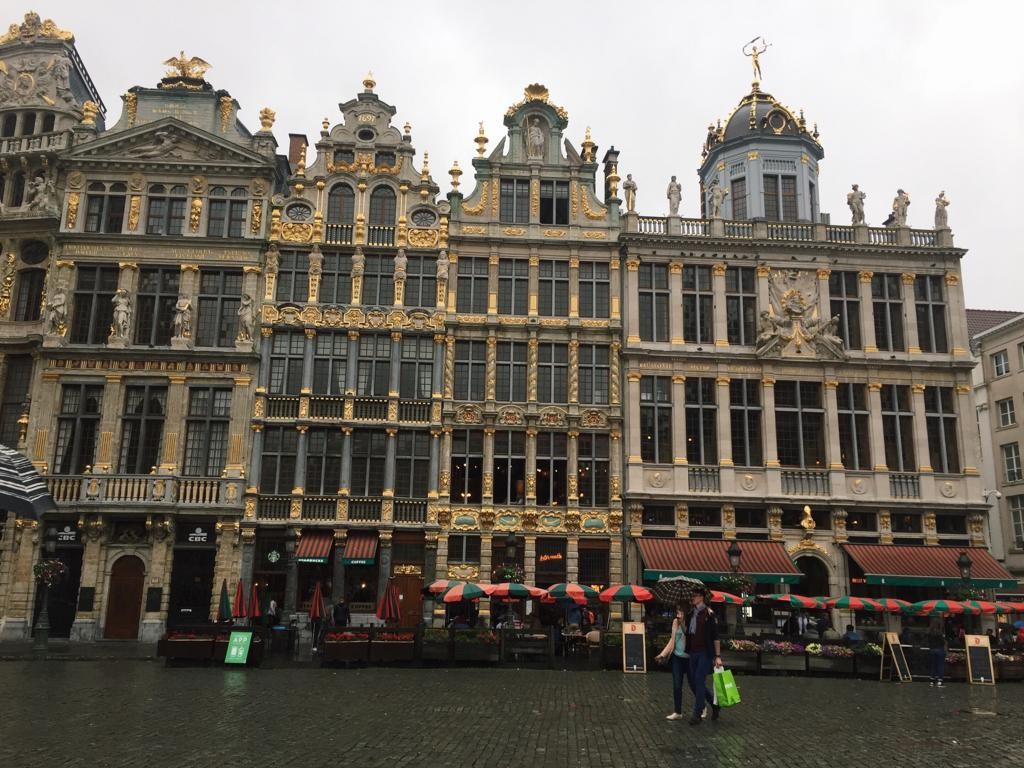
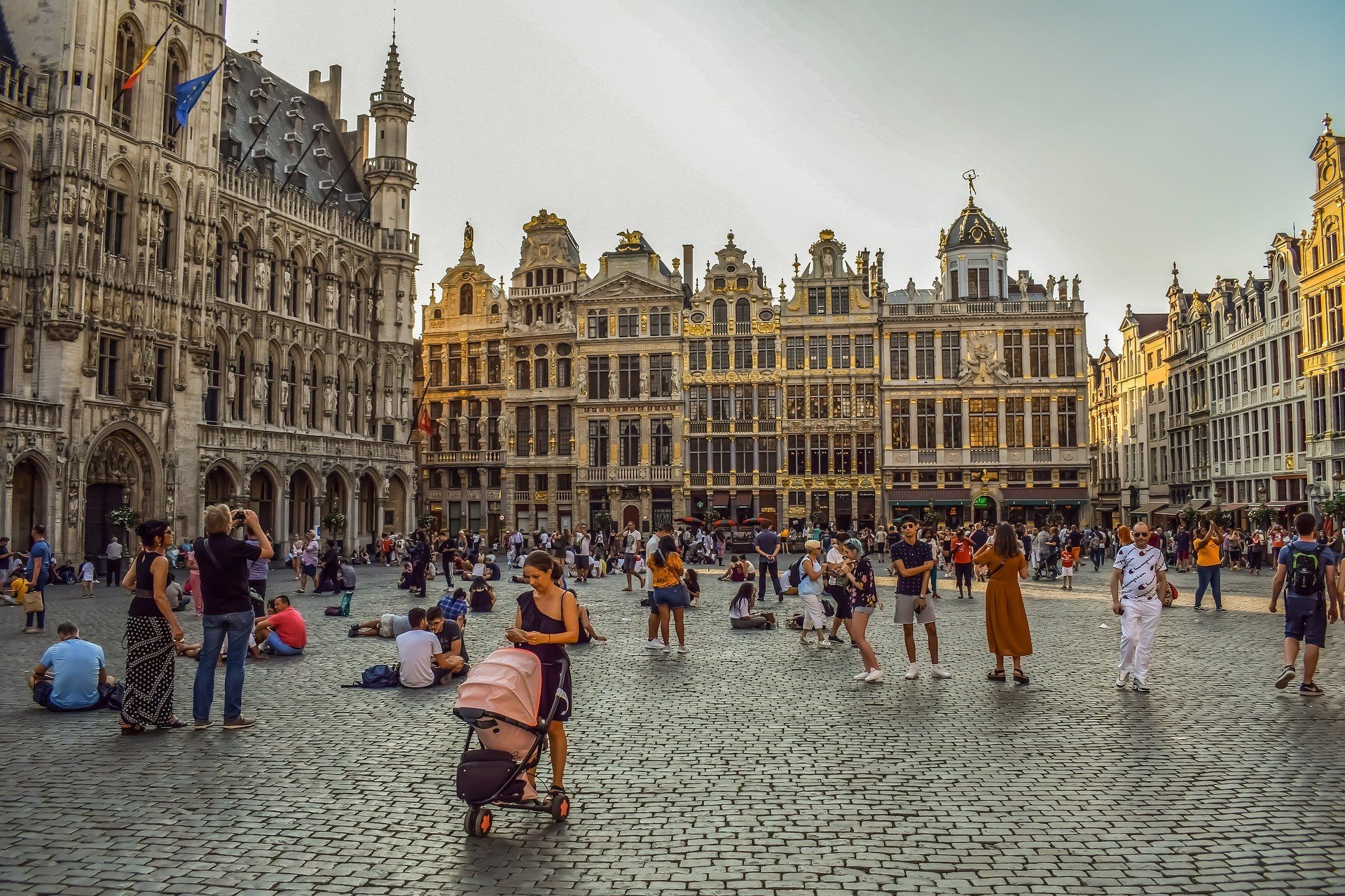
If you're lucky enough to come in the spring, this plaza is filled with a carpet of begonia flowers, which gives even more colour and life to the place.
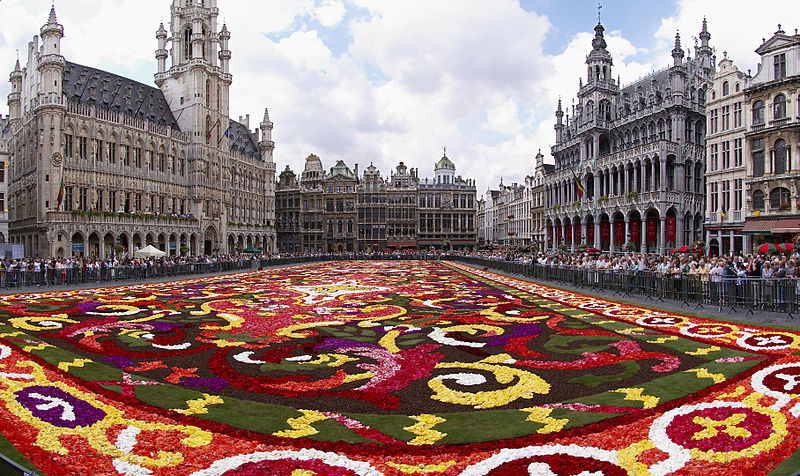
Around 4 minutes walk from the plaza, you'll find the famous Manneken Pis. It's nothing more than a small statue of a little boy having a wee. Its name literally translates to "Little Pissing Man". It's pretty small and you'll find it in a tiny corner. When we went, he was dressed in a Canadian hockey jersey. I don't know why. At the top there is a niche inscription that reads: "In petra exaltavit me, et nunc exaltavi caput meum super inimicos meos”. In English it could be translated to "The Lord placed me on a stone base, and now I raise my head above my enemies" which refers to the victory for the people of Brussels when they faced an attack from the French in 1965. The only problem was that this statue was stolen around 1960, which caused an international scandal. Since then, the Mannekin Pis statue is a copy.
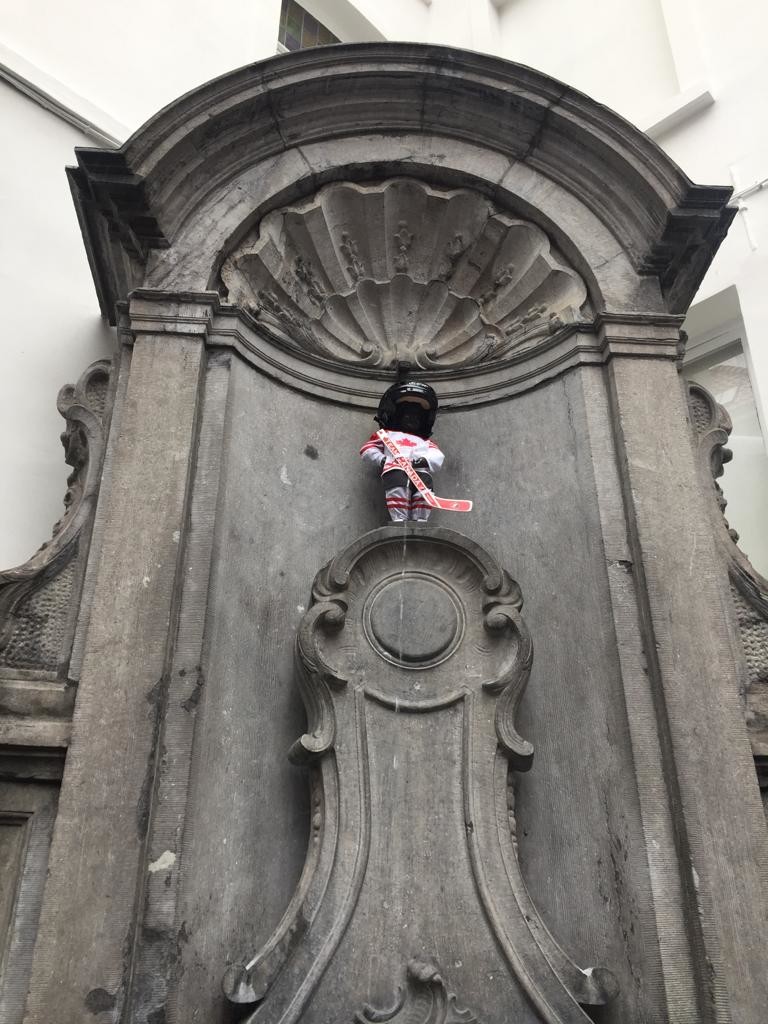
The funny thing is that in 1980, a very similar statue was made: the Jeanneke Pis. But this time, it's a girl. She is also found near the Grand-Place.
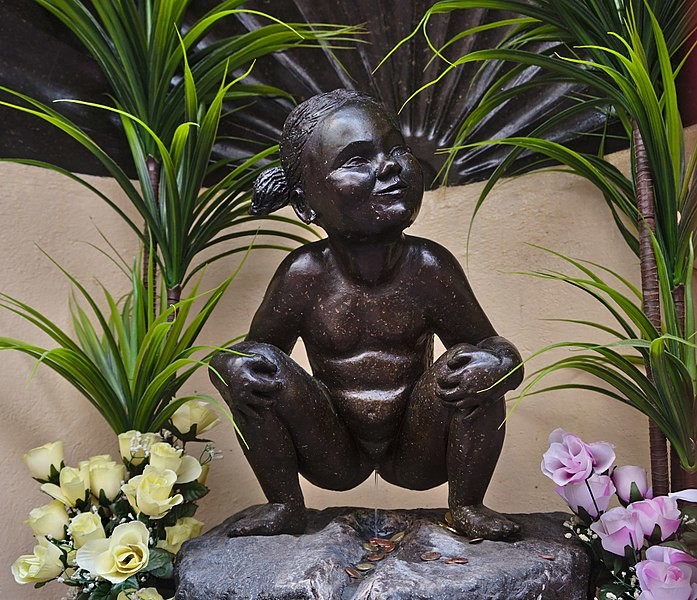
Afterwards, we arrived at the Place du Petit Sablon that has a small space where nature and architecture meet. It's a small garden in which they tried to exalt Belgian nationalism in the 19th century. Throughout the garden there are many different statues that represent medieval guilds, such as builders or sculptors. These also include statues of historically famous Belgians, such as the geographer Ortelius.
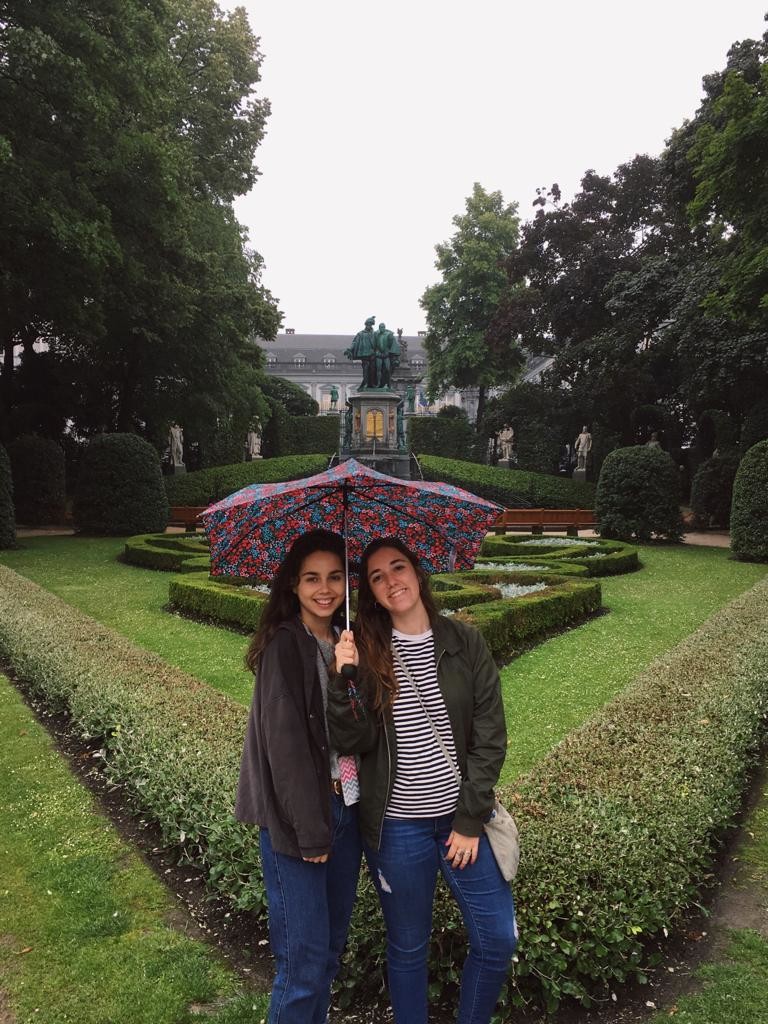
After having walked through the city for several hours, we went back to the hotel, and we were absolutely dead. But there's still one thing for us to see, the final symbol of the city: the Atomium. On the way, we stumbled upon the Notre Dame de Laeken Church which is where the Belgian kings are buried.
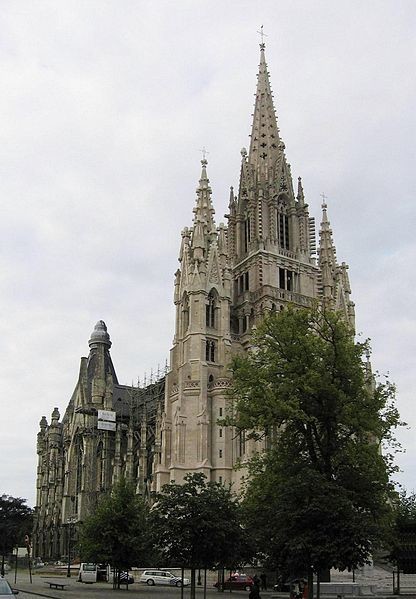
Finally, we arrived at the Atomium, which is monument made of steel and aluminium which represents an iron crystal, but 165 times bigger. It was made in 1958 for the World Fair and since then has become one of the symbols of the city. I didn't have to do anything but look at it, and I felt an immediate impact. It truly is massive. Afterwards, I felt really dizzy. And finally, I felt a great admiration for those who had built it.
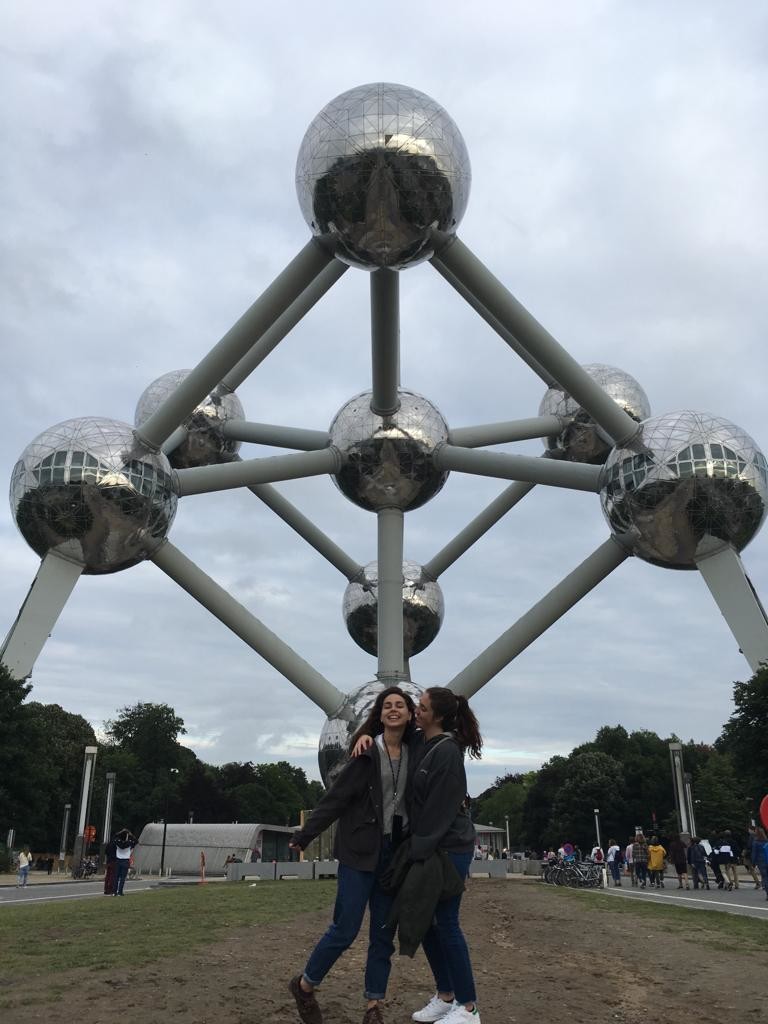
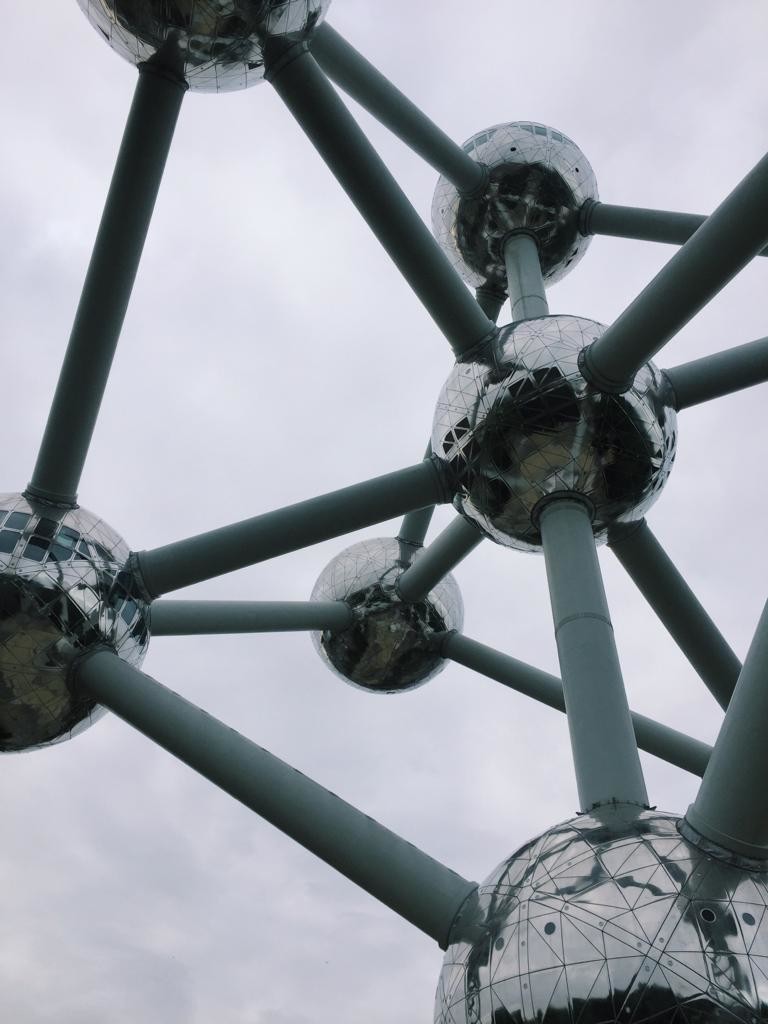
Next to the Atomium is this other red thing that doesn't represent anything special. It's by Arik Levy, and he explained that he made it just to put it right underneath the huge Atomium sculpture.
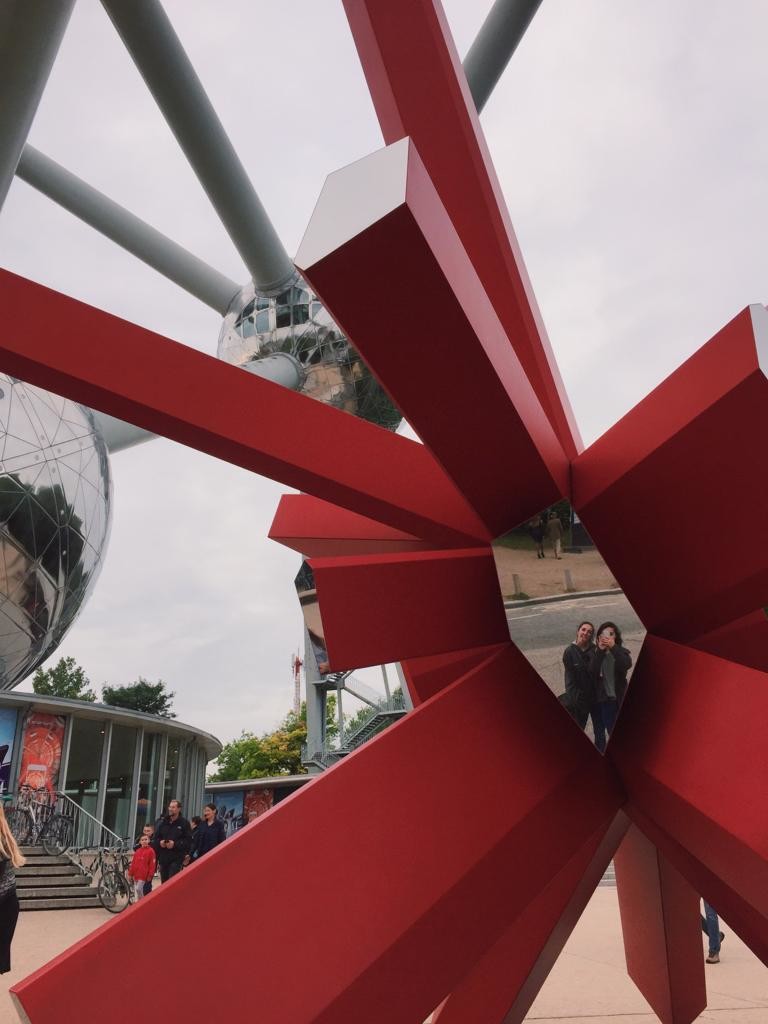
It was time to go home, and Brussels had rewarded us with a little bit of sun that we enjoyed for the first time when going to see the Grand-Place again. It was totally worth that other trip, it was truly incredible. And then we went to the top of the Mont des Arts to watch the sunset. Without a doubt, this is the best viewpoint in Brussels. From it you can see the Grand-Place and the tower of the town hall.

Day 2: the outskirts of Brussels
As we were in Brussels, we couldn't possibly miss out on the European Quarter. Being International Relations students, and possibly, future employees of the European Union, it was obligatory for us to visit. Brussels is considered to be the capital of the European Union although it isn't official. In this city, you can find some of the most important cogs of the EU. Among them, the European Commision, the Council of the European Union, the European Council and the European Parliament. In fact, the colours of the European Union flag were chosen based on the flag of Brussels: blue and yellow.

This is a photo of the European Parliament, which is also a piece of the famous Berlin Wall.
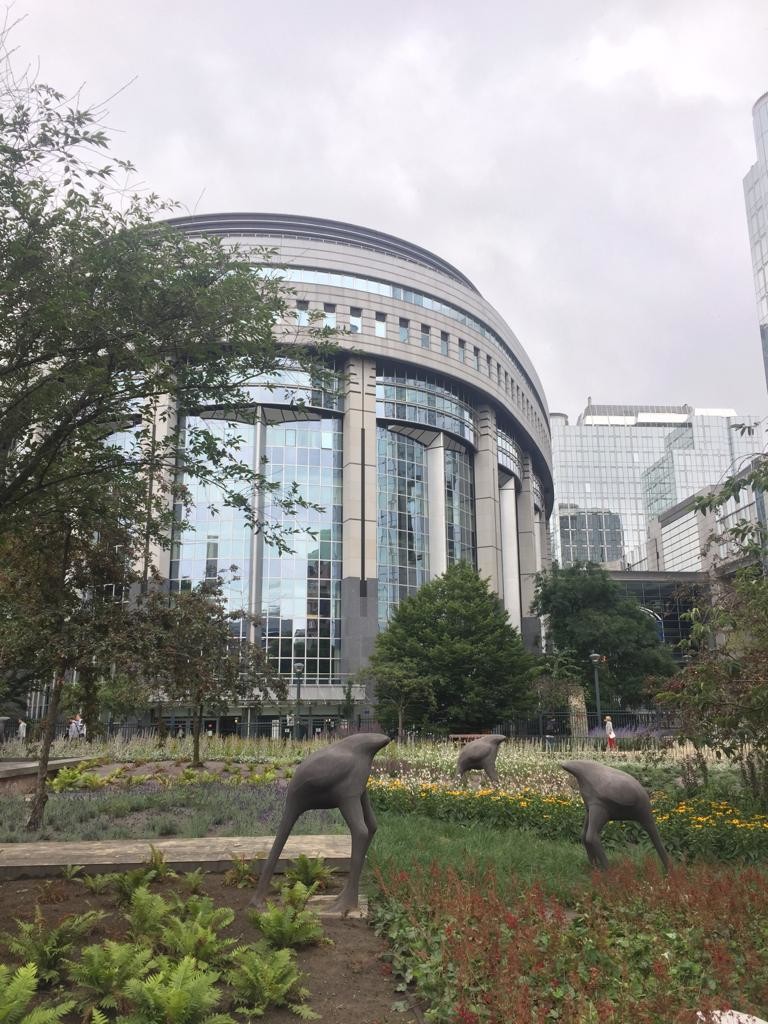
Not very far from the centre you'll find the Parc du Cinquantenaire or Jubelpark, with an enormous architectural collection full of arches and sculptures in the shape of a U. This monument was erected by King Leopold II in 1905 in commemoration of the 50th anniversary of Belgian independence. Along the side there are three enormous arches in which you'll find the sculptures that represent the distinct provinces which make up Belgium.
Here is a photo of us in front of the architectural collection.
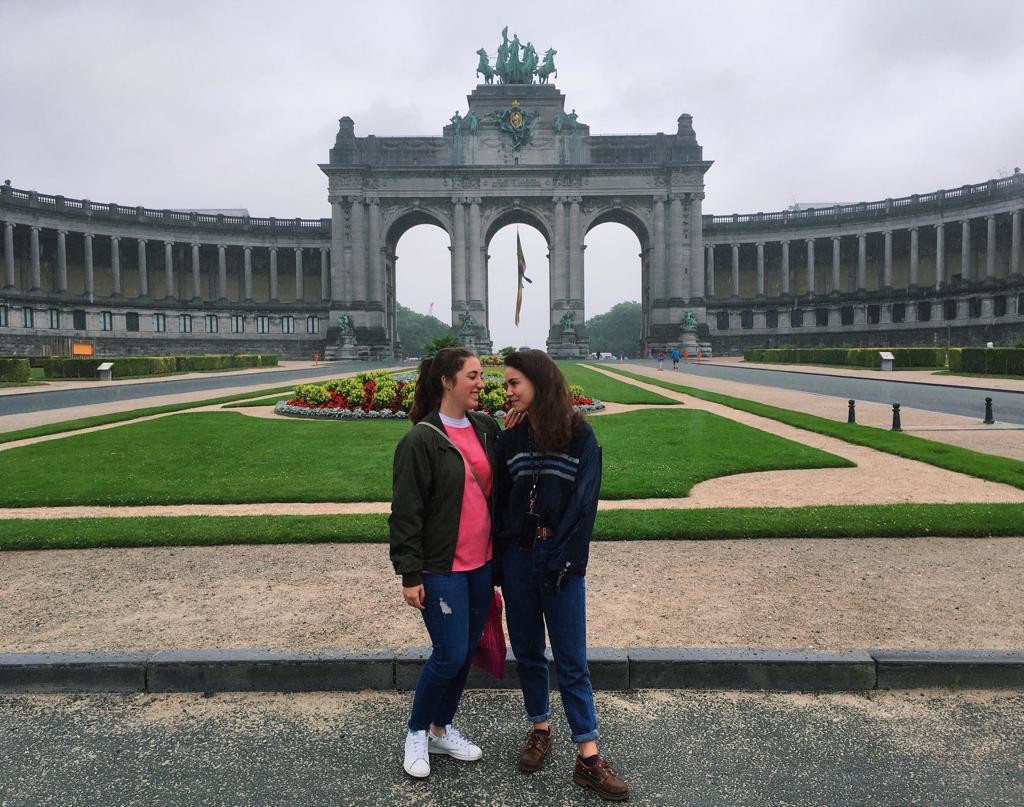
We went to eat with a friend of ours from here who decided to take us on a whistle stop tour of the last few things we had left to see.
First of all, St Michael and St Gudula Cathedral which is of a Gothic style and was built between 1226 and 1500.
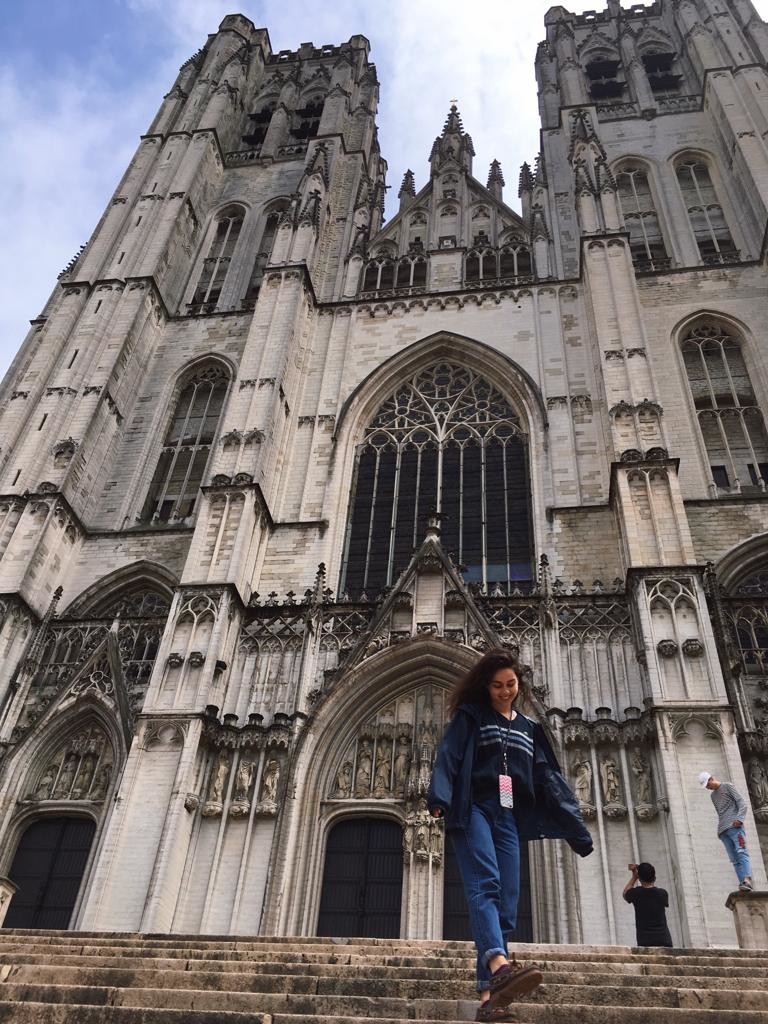
And secondly, the Place Royale, one of my favourites but I'm not sure why. The style and features of it make me think just how old it is, but at the same time it's in a completely modern city.
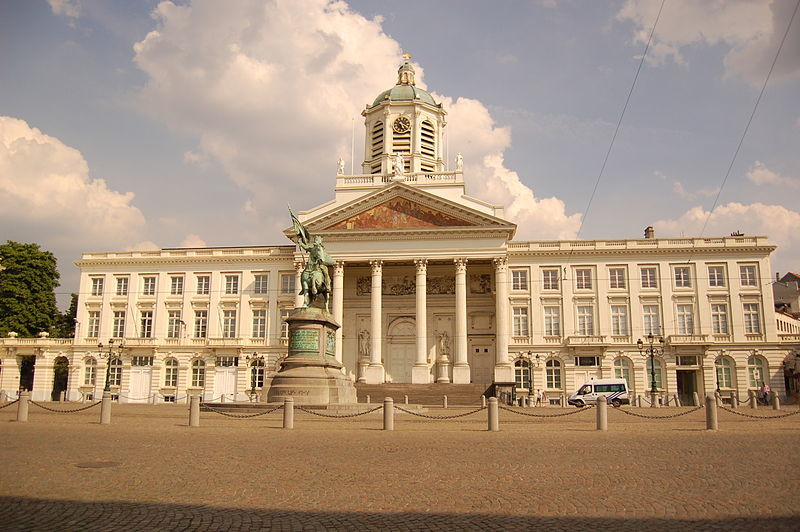
Right in this plaza, through a hidden walkway, you can get to the Magritte Museum. We couldn't go inside, but once again the architecture really impressed me.
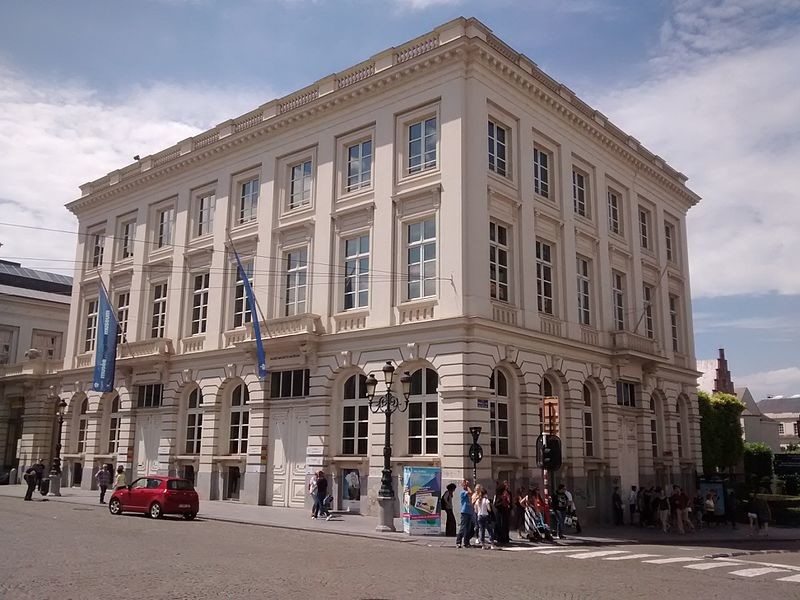
And that is Brussels. Truth is, it's a very international city. You could walk down any street and you'd be able to distinguish between a number of languages being spoken. Everyone seems very formal and serious, but open at the same time. They're all very friendly in the shops and if you strike up a conversation in French, they'll always reply with a smile. Honestly, if it wasn't for the rain, and the fact it didn't stop raining, it would be somewhere I'd love to live. But well, we leave that up to the future.
I hope that this post has helped you to organise a trip to Brussels yourselves. If you've liked this post, pay a visit to my other posts about Express trip to Paris or our Road trip through Italy.
Photo gallery
Content available in other languages
- Español: Bruselas en dos días
- Italiano: Bruxelles in due giorni
Want to have your own Erasmus blog?
If you are experiencing living abroad, you're an avid traveller or want to promote the city where you live... create your own blog and share your adventures!
I want to create my Erasmus blog! →



































Comments (0 comments)